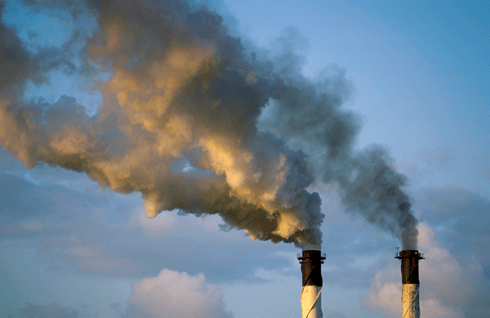
|
Published: 5 December 2011
Record global emissions in 2010, despite GFC
The atmospheric concentration of CO2 in 2010 rose to 389.6 parts per million – the highest recorded in at least 800 000 years – according to the Global Carbon Project’s annual emissions growth report card, published in Nature Climate Change today.

|
|
A missed opportunity? Global CO2 emissions rebounded in 2010, after being dampened by the GFC in 2008-09. Credit:
G.Heath/ScienceImage
|
According to Global Carbon Project (GCP) scientists, the increase in CO2 emissions in 2010 represents a record 5.9 per cent increase compared with the previous year’s levels, which were dampened by the 2008-2009 Global Financial Crisis (GFC).
The analysis shows that the short-lived impact of the GFC on emissions has been counteracted by strong emissions growth in emerging economies and a return to emissions growth in developed economies.
‘The GFC was an opportunity to move the global economy away from a high emissions trajectory. This opportunity has not been realised, but developed countries have moved some way closer to their emission reduction commitments as promised in the Kyoto Protocol and Copenhagen Accord,’ said the GCP Executive Director, Dr Pep Canadell from CSIRO.
The largest contributions in 2010 came from China, USA, India, the Russian Federation, and the European Union. Coal burning accounted for much of the increase in fossil fuel-related emissions. CO2 from the cement industry accounted for 52 per cent of total emissions growth.
The international science team that prepared the GCP analysis tracked emissions growth alongside significant economic events since 1960 – the 1970s oil crisis, the US Savings and Loans Crisis, the collapse of the Federated States of the Soviet Union, the Asian Financial Crisis, and the GFC.
‘The analysis suggests that, in times of crisis, countries maintain economic output by supporting less-energy intensive activities,’ said CSIRO’s Dr Mike Raupach, one of the six co-authors, including Dr Canadell, of the GCP report.
‘These burst-like dynamics are related to easing of energy prices, government investment to stimulate economic recovery, and the effect of a decade of high economic growth in the developing world, which propagated into a rapid global post-GFC return to high emissions.’
The research was partly funded by a grant from the Australian Climate Change Science Program supported by the Australian Department of Climate Change and Energy Efficiency.
Source: CSIRO

